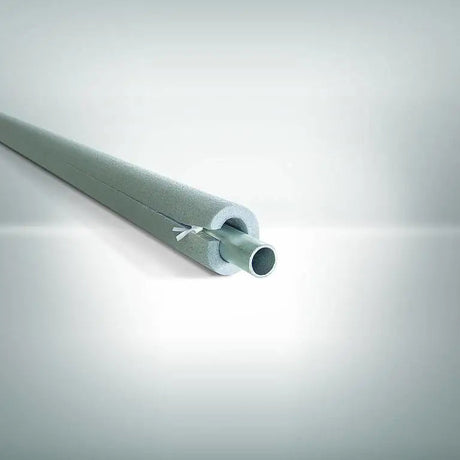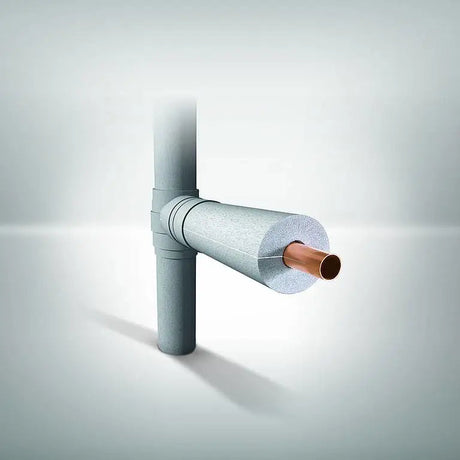Fire Safety Standards for Coverings
Introduction
When it comes to keeping our homes and workplaces safe, few things are as crucial as fire safety standards for coverings. Have you ever stopped to think about what's wrapped around your walls, floors, and furniture? These coverings might seem mundane, but they play a pivotal role in protecting us from the fierce grip of a fire.
In this guide, we'll explore the different types of coverings that need to adhere to stringent fire safety standards. From the cosy carpet under your feet to the insulation hidden within your walls, every material has a part to play in fire prevention and safety.
Regulatory Bodies and Standards
Ever wonder who decides what's safe and what's not when it comes to fire hazards? That's the job of regulatory bodies. These organisations are the watchdogs of fire safety, sniffing out any risks and setting standards that coverings must meet to be deemed safe.
In the UK, these standards are often shaped by national and European regulations. But what exactly are these standards? Simply put, they're a set of rules and guidelines that coverings must pass in order to be used in construction and interior design. These standards ensure that materials don't go up in flames at the drop of a hat, keeping us all a bit safer.
Types of Coverings
Coverings come in many shapes and sizes, and just like people, they each have their own unique characteristics. We've got the soft ones, like fabrics for curtains and upholstery, and the hard ones, like wood panelling and plastic wall cladding.
But here's the kicker – each type of covering dances to the beat of its own drum when it comes to fire safety standards. A plush velvet curtain doesn't face the same fire tests as a piece of plastic wall cladding. It's a bit like expecting a fish to climb a tree – different materials require different standards.
Fabric Coverings
Imagine your sofa without its fabric covering – not quite as inviting, is it? But beyond aesthetics, these fabrics must be more than just pretty; they must be safe. Standards for fabric coverings focus on how quickly flames spread and how much smoke is produced. It's like a suit of armour, only softer, and much more stylish.
Wood and Plastic Coverings
Wooden floorboards and plastic tiles – they might be at opposite ends of the texture spectrum, but when it comes to fire, they both need to stand their ground. For these materials, the standards revolve around how long they can resist fire without losing their integrity. It's a battle against time and temperature, where every second counts.
Common Fire Safety Requirements
Now, let's talk about what these coverings have to sweat through to prove their worth. The most common requirement? Being flame retardant. This means they need to resist catching fire easily. It's like having a superhero shield that deflects fire instead of villainous attacks.
But there's more. They also need to produce minimal smoke and release fewer toxic gases. Why? Because in the event of a fire, smoke and toxic gases pose significant risks to our health – even more than the flames themselves. It's a bit like having a silent, but deadly, opponent in the ring.
Testing and Verification
So, how do we know if a covering is up to scratch? Through rigorous testing and verification, that's how. Coverings are put through their paces in controlled environments, facing the heat (literally) to see how they perform. If they pass, they earn the right to protect our homes and offices. It's like a graduation ceremony, but with more fire and less pomp.
Compliance and Certification
You can't just claim your covering is fire-resistant; you've got to prove it. That's where compliance and certification come in. It's a bit like getting a passport – a document that proves you've met all the necessary standards to enter the world of safe coverings.
Manufacturers and installers must navigate a labyrinth of testing and paperwork to obtain this golden ticket. And once they have it, they're required to display it proudly on their products, often in the form of labels. These labels are not just for show; they're a sign of trust and reliability.
Certification Labels
Imagine shopping for a new rug. You spot a label that reads 'Certified Fire Resistant'. That little label is a big deal – it's your assurance that the rug won't turn your living room into a barbecue if a stray spark comes its way. It's a certification that carries weight, like a badge of honour in the world of fire safety.
The Role of Testing Laboratories
Who bestows these certifications? Independent testing laboratories. They're the judges in the court of fire safety, delivering their verdict on whether a covering is safe or needs more work. It's a serious business, and these labs are equipped with the latest technology to ensure nothing slips through the cracks.
Case Studies and Examples
Let's put theory into practice and look at some real-life examples. Picture this: a hotel decides to refurbish its lobby with new, luscious carpets. They pick a style that's both stunning and certified fire-resistant. Guests admire the decor, unaware of the invisible shield beneath their feet, keeping them safe from fire's clutches.
On the flip side, consider the infamous case where coverings didn't meet the standards. The consequences? Property damage, financial loss, and worse, a threat to human life. These cautionary tales remind us of the gravity of fire safety standards in the coverings industry.
Success Stories
We love a good success story, don't we? There's something about hearing how a particular type of fire-resistant covering saved the day during an emergency. These stories aren't just heartwarming – they're proof of the standards at work, a testament to why we need them in the first place.
Lessons from Failures
Failures aren't just setbacks; they're learning opportunities. When a covering falls short of fire safety standards, it teaches manufacturers and regulators alike how to improve. It's a tough lesson, but a necessary one, ensuring that the same mistake isn't made twice.
Maintenance and Compliance Checks
Just because a covering is certified at the point of sale doesn't mean it's set for life. Like a car or a computer, it needs regular check-ups to ensure it's still in peak condition. Maintenance and compliance checks are like health screenings for coverings, catching potential issues before they become hazardous.
Best Practices for Maintenance
So, what are some best practices for keeping your coverings compliant? Regular cleaning, for starters, can prevent the build-up of dust and grime that might affect fire resistance. It's a bit like brushing your teeth – a simple act that can prevent bigger problems down the line.
Importance of Regular Checks
And then there are the professional check-ups, where experts scrutinize coverings to ensure they're still up to code. These checks are crucial; they're the difference between assuming you're safe and knowing you're safe. It's a bit like having a trusty guard dog that barks at the first sign of trouble.
Role of Installers and Manufacturers
Installation and manufacturing – that's where the journey of fire safety begins. Installers are like the front-line soldiers, ensuring that coverings are fitted correctly and securely. Any slip-up here can compromise the entire safety of a building. It's a responsibility as heavy as the materials they work with.
Manufacturers, on the other hand, are the architects of safety. They design and produce coverings that meet, or better yet, exceed fire safety standards. They're the ones who innovate and push the boundaries of what's possible in fire-resistant materials.
Responsibilities for Safety Compliance
The responsibilities of installers and manufacturers go beyond just selling a product. They're tasked with educating themselves and their clients on the importance of fire safety. It's not just about making a sale; it's about ensuring that every piece of material they provide contributes to a safer environment.
Providing Information and Guidance
Manufacturers must also supply clear information and guidance on how to maintain the fire safety of their products. It's like giving a map to a treasure hunter - without it, they're just guessing. With it, they're equipped to reach their goal of a safe and compliant space.
Impact on Building Regulations
Fire safety standards for coverings don't exist in a vacuum. They're intertwined with building regulations, shaping the very blueprint of our constructed environments. When a new standard is introduced, it's like a ripple effect – architects and builders must adapt, ensuring their designs are not just beautiful but safe as well.
Building Design and Construction Implications
So, what does this mean for building design and construction? It's a challenge, no doubt, to balance aesthetics with safety. But it's also an opportunity to innovate, to find new ways to integrate fire-resistant materials into the fabric of our buildings. It's a puzzle that requires both creativity and precision to solve.
International Standards and Harmonization
You might be thinking, is there a one-size-fits-all when it comes to fire safety standards for coverings? The answer is a bit complicated. Different countries have different rules, but there's a growing push for international standards. It's like trying to tune multiple instruments to play in harmony – a tricky task, but one that can lead to a beautiful symphony of safety.
Efforts to Unify Safety Standards
These efforts are critical in a globalised world where materials cross borders as easily as people do. Harmonizing standards means that a fire-resistant covering made in one country can be trusted in another. It's a step towards a world where safety knows no boundaries.
Challenges and Controversies
Navigating the world of fire safety standards isn't always smooth sailing. There are challenges that stir the waters and controversies that fuel the fire of debate. For instance, how do we balance cost and safety effectively? And are all fire safety tests truly reflective of real-life scenarios?
Some might argue that stringent fire safety regulations stifle innovation or increase costs. Others counter that you can't put a price on safety. It's a debate where both sides have their merits, but the ultimate goal remains clear – keeping people and property safe from the ravages of fire.
Conflicts with Other Regulations
Imagine trying to play a game where the rules keep changing. That's what it's like for manufacturers when fire safety standards seem at odds with other regulatory requirements. It's a balancing act, trying to meet all the criteria without toppling over. And sometimes, the push and pull between different regulations can create a real headache.
Industry Adaptation
The coverings industry is constantly evolving, and with each change comes the need for adaptation. New materials and methods can disrupt the status quo, leading to a scramble to ensure they meet fire safety standards. It's like trying to fit a square peg into a round hole, and it takes ingenuity to make it work.
Consumer Awareness and Education
Do you know how fire-resistant the coverings in your home or office are? The truth is, many consumers don't. That's why raising awareness and educating the public about fire safety standards is as vital as the standards themselves. It's like having life-saving medicine but not knowing when or how to take it.
The Role of Retailers
Retailers can play a pivotal role in educating consumers. Imagine walking into a store and being greeted not just by a salesperson, but by a guide who can walk you through the fire safety features of each product. Knowledge is power, after all, and informed consumers can make safer choices.
Access to Information
Thankfully, the internet is like a vast library at our fingertips, offering resources and information on fire safety standards. From government websites to industry blogs, there's a wealth of knowledge available for those who seek it. But the key is encouraging people to actually look for it and take it seriously.
Future Developments and Trends
Peering into the crystal ball, what does the future hold for fire safety standards and coverings? One thing's for sure – the march of progress waits for no one. We can expect to see advancements in materials and technologies that offer even greater protection against fire.
Innovations in Fire-Resistant Materials
The future is bright for fire-resistant materials, with new innovations on the horizon. Imagine coverings that not only slow down the spread of fire but actively suppress it. It's like having a firefighter built into every wall, floor, and piece of furniture.
Trends in Safety and Design
And let's not forget the trends that weave safety into the very fabric of design. The aesthetic appeal of coverings will always be important, but safety is becoming an increasingly vital part of the design conversation. It's no longer an afterthought but a key consideration from the get-go.
Conclusion
So there you have it – a deep dive into the world of fire safety standards for coverings. It's a complex tapestry woven from the threads of regulation, innovation, and vigilance. From the materials that clad our buildings to the fabrics that adorn our furniture, every covering holds the potential to either fuel a fire or protect us from it.
Remember, fire safety is not just the concern of regulators and manufacturers; it's a shared responsibility. We all have a role to play in ensuring that the spaces we inhabit are as safe as they can be. Whether you're an installer, a manufacturer, a retailer, or a consumer, staying informed and vigilant is key.
So let's keep the conversation burning. Let's push for safer materials, clearer standards, and better education. After all, when it comes to fire safety, there's no room for complacency – only for continued attention and action.
























































